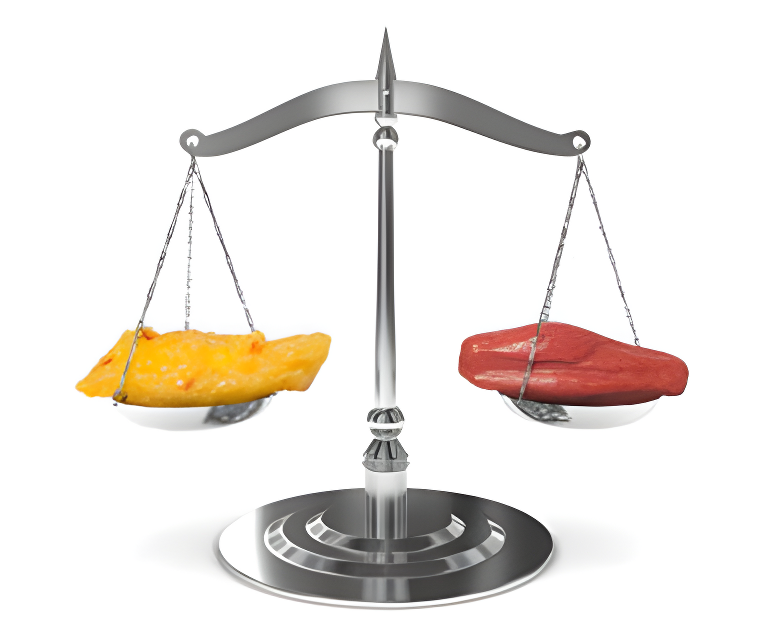Trying to turn your fat into muscle? You may have an easier time turning your husband into George Clooney. Contrary to what you’ve heard, even the best diet and exercise program in the world won’t turn your fat into muscle. Fat and muscle are completely different and in the world of weight loss, muscle is king.
- Muscle is compact. Have you heard that “muscle weighs more than fat”? Well, a pound of muscle weighs the same as a pound of fat. The difference is muscle takes up less room. Two people both weighing 170 pounds will have a completely different shape and size based on the percent of fat and muscle they have.
- Muscle burns calories. The more muscle you have, the more calories you burn (even at rest). Muscle burns about five to six calories per pound whereas fat only burns two to three calories per pound. In the case of the two 170 pound individuals, the one with more muscle will be able to eat more calories and still maintain their weight.
- Muscle is evenly distributed. If you’re following a balanced exercise program you will gain muscle over the entire body. This muscle gives you strength and power to perform your daily tasks with ease. When you gain fat, it is typically distributed in the middle of the body (stomach, hips, and glutes). Fat can’t contract, so instead of making tasks and movement easier, they become harder as excess fat acts as dead weight.
- Building muscle takes time. Building muscle (hypertrophy) and losing muscle (atrophy) doesn’t happen overnight. Muscles change slowly based on the type, amount, and intensity of your physical activity. Fat tissue can be lost or gained quickly based on calorie consumption.
- Muscle gives more than definition. Muscle tissue helps support the skeletal system and can even improve your posture. Better posture can improve your breathing, your self esteem, and your overall appearance. Fat doesn’t support your skeletal system and could actually inhibit breathing and lead to poor posture.
- Muscle protects your joints from injury. Joints are the place where two bones come together. Muscles help keep the joint in place and properly aligned. Fat doesn’t support the joints and adds more weight which can put pressure and strain on your joints.


